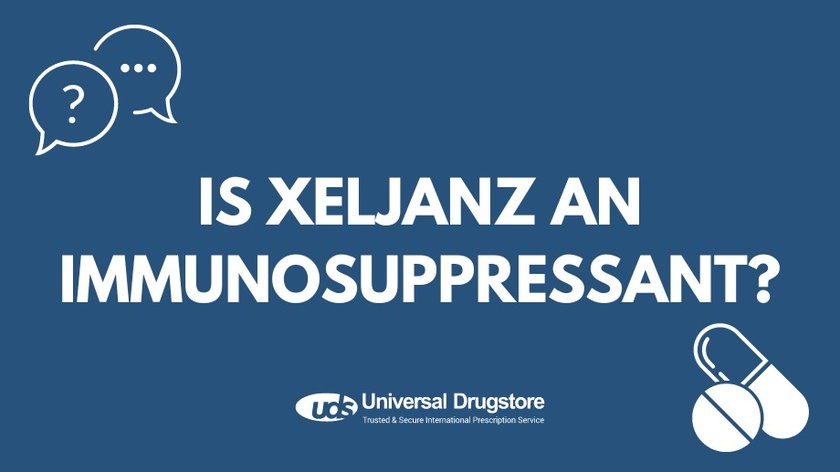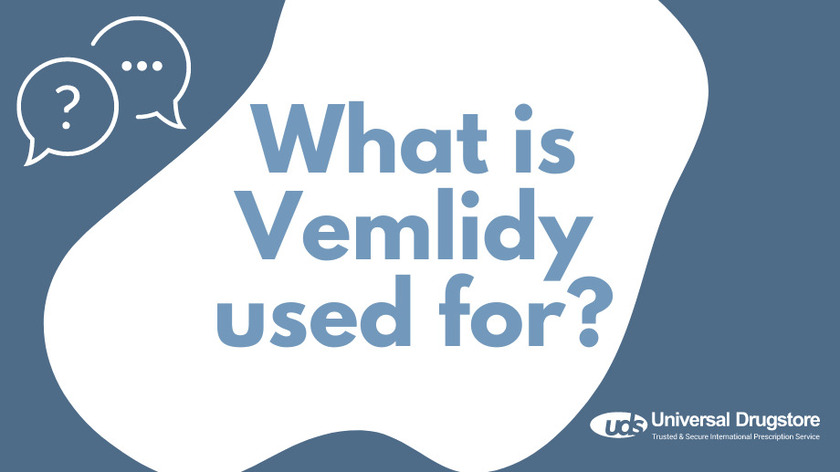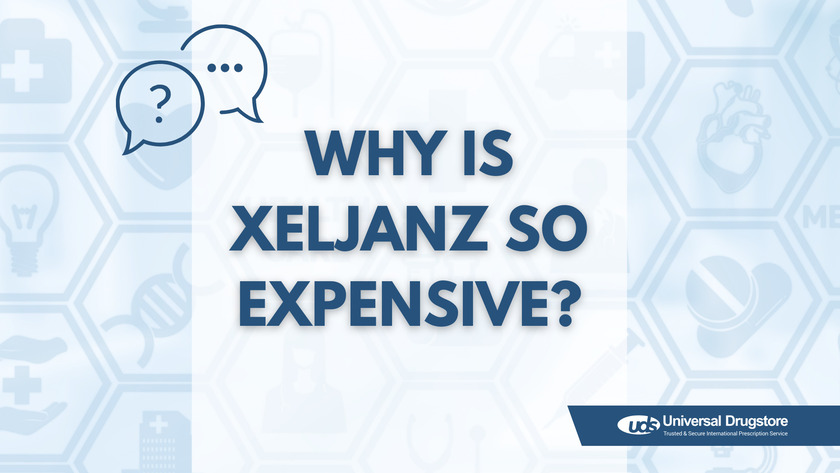Your body’s immune system helps fight off infections that cause illness. Sometimes it can mistakenly attack some healthy cells and tissues. Immunosuppressants help stop your immune system from causing damage to these cells and tissues. Organ transplant patients take these medications to prevent their bodies from rejecting their new organs. Immunosuppressant drugs such as Xeljanz also treat symptoms and prevent complications from autoimmune diseases. Xeljanz is used for different types of arthritis, including the treatment of rheumatoid arthritis and another type of arthritis associated with psoriasis. It is also approved to reduce the symptoms of ulcerative colitis, including rectal bleeding, bloody diarrhea, stomach cramps, and pain. Xeljanz and other immunosuppressants are powerful drugs and need to be monitored carefully to prevent serious side effects.
What does Xeljanz treat?
Xeljanz (tofacitinib) is a brand-name oral medication that is FDA-approved to treat adults with:
-
Active rheumatoid arthritis (RA)
-
Active psoriatic arthritis (PsA)
-
Ankylosing spondylitis
-
Active ulcerative colitis (UC)
It is also approved to treat patients 2 years of age and older with polyarticular course juvenile idiopathic arthritis (pcJIA). Xeljanz is usually prescribed to patients who have failed one or more tumor necrosis factor or TNF blockers such as Humira (adalimumab). It can be used by itself or along with non-biologic disease-modifying antirheumatic drugs (DMARDs) such as Rheumatrex (methotrexate).
How does Xeljanz work?
The active ingredient in Xeljanz, tofacitinib, is a Janus kinase, or JAK inhibitor. JAK enzymes play an important role in the process of inflammation and damage that occurs in rheumatoid arthritis and other autoimmune conditions. By blocking the JAK enzymes, Xeljanz reduces the inflammation and other symptoms of the condition being treated.
What doses of Xeljanz are available?
Xeljanz is available in several dosage forms and strengths, including a 5 mg and 10 mg immediate-release tablet and a 1 mg/mL oral solution. Xeljanz XR is available as an 11 mg and 22 mg extended-release tablet.
What is the dosage of Xeljanz?
Your dose of Xeljanz will depend on the condition being treated, your response to the medication, other medical conditions you have, and what other medications you are taking.
The recommended dose for the treatment of rheumatoid arthritis, ankylosing spondylitis, and psoriatic arthritis is Xeljanz 5 mg twice daily or Xeljanz XR 11 mg once daily. Psoriatic arthritis is typically treated with Xeljanz along with a non-biologic DMARD.
The recommended dose for the treatment of ulcerative colitis is Xeljanz 10 mg twice daily or Xeljanz XR 22 mg once daily for 8 weeks. If you are still having significant symptoms, you can continue this dose for up to a total of 16 weeks. If after 16 weeks, Xeljanz is still not working, it should be discontinued. If you are seeing significant improvement after 8 to 16 weeks of treatment, you will begin the maintenance dose which is Xeljanz 5 mg twice daily or Xeljanz XR 11 mg once daily.
For the treatment of polyarticular course juvenile idiopathic arthritis, the recommended dose of Xeljanz tablets or Xeljanz oral solution is 5 mg twice daily or a weight-based equivalent dose twice daily.
Your dose may need to be adjusted if you take certain medications, have kidney or liver problems, or have low white or red blood cell counts.
What drugs should not be taken with Xeljanz?
When Xeljanz is taken with other medications, it can cause drug interactions and change how they work or make some side effects more likely or severe. You should ask your healthcare provider if any of the prescription medications, over-the-counter (OTC) drugs, vitamins, or supplements you take may interact with Xeljanz, including certain antifungals (ketoconazole and fluconazole) and certain biologic DMARDs or potent immunosuppressive drugs (cyclosporine, tacrolimus, and azathioprine).
What are the side effects of Xeljanz?
The most common side effects of Xeljanz seen in clinical trials when compared to placebo are:
-
Upper respiratory tract infection
-
Urinary tract infection
-
Nausea
-
Diarrhea
-
Headache
-
Common cold symptoms
-
High cholesterol levels
-
Shingles (herpes zoster infection)
-
High blood pressure
Sometimes, Xeljanz can cause more serious side effects, including:
-
Serious, life-threatening allergic reactions (hives, shortness of breath, or swelling of your lips, tongue, or throat)
-
Low white blood cells (neutrophils and lymphocytes), which can lead to an increased risk of serious infections
-
Increased risk of death from cardiovascular events such as heart attack, stroke, and blood clots (thrombosis) in people aged 50 years and older who have at least 1 heart-related risk factor and are taking Xeljanz twice a day
-
Increased risk of certain cancers including lymphoma, breast cancer, skin cancer, and other malignancies
-
Increased risk of certain viruses such as Epstein-Barr virus
-
Gastrointestinal perforations (holes in your stomach or intestines), especially if you take nonsteroidal anti-inflammatory drugs (NSAIDs), corticosteroids, or methotrexate
-
Anemia (low red blood cells)
Contact your healthcare professional for medical advice about any possible adverse effects you experience while taking Xeljanz. You can report your adverse effects to the FDA at 1-800-FDA-1088 or www.fda.gov/medwatch.
Who should not take Xeljanz?
Xeljanz comes with the following Boxed Warning from the U.S. Food and Drug Administration (FDA):
-
Xeljanz can lower your immune system’s ability to fight infections. Some people have developed serious infections including tuberculosis (TB) as well as other bacterial and fungal infections that can possibly lead to death. Your doctor will order blood tests to check for infection before you start Xeljanz and closely monitor you for symptoms of an infection while taking Xeljanz.
-
There is an increased risk of death from heart attack, stroke, and other heart events in people aged 50 years and older who have at least 1 heart-related risk factor and are taking Xeljanz twice a day.
-
Lymphoma and other cancers have occurred in people taking Xeljanz. Be sure to let your doctor know if you have a personal or family history of cancer.
-
The risk for serious blood clots such as deep vein thrombosis (blood clot in a vein; usually in your leg), pulmonary embolism (blood clot in your lungs), and arterial thrombosis (blood clot in an artery) is increased in people taking JAK inhibitors such as Xeljanz.
Your healthcare provider should be aware of all your medical conditions before you start taking Xeljanz, including:
-
Active infection
-
Are a current or previous smoker
-
Personal or family history of cancer
-
Previous heart attack or stroke
-
History of blood clots
-
Hepatitis B
-
Kidney problems
-
Ulcers in your stomach or intestines
-
Diverticulitis
-
A known allergy to tofacitinib or any ingredients in the Xeljanz formulation
-
Recently received or are scheduled to receive a live vaccine
-
Are pregnant, plan on becoming pregnant, or are breastfeeding
Is Xeljanz used to treat psoriatic arthritis?
In December 2017, the FDA approved a new indication for Xeljanz and Xeljanz XR for the treatment of adults with active psoriatic arthritis who did not respond to, or could not tolerate, DMARDs such as methotrexate. It has been found that Xeljanz reduces joint pain and swelling in some psoriatic arthritis patients in as little as 2 weeks. For others, it may take up to 3 months or longer to see symptom improvement.
Related Medications
-
Orencia (abatacept)
-
Remicade (infliximab)
-
Cimzia (certolizumab)
Sources









